Related Research Articles

The diesel engine, named after Rudolf Diesel, is an internal combustion engine in which ignition of the fuel is caused by the elevated temperature of the air in the cylinder due to mechanical compression; thus, the diesel engine is a so-called compression-ignition engine. This contrasts with engines using spark plug-ignition of the air-fuel mixture, such as a petrol engine or a gas engine.

Fuel injection is the introduction of fuel in an internal combustion engine, most commonly automotive engines, by the means of an injector. This article focuses on fuel injection in reciprocating piston and Wankel rotary engines.
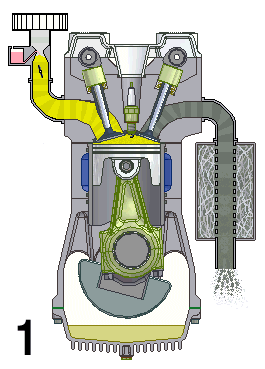
A naturally aspirated engine, also known as a normally aspirated engine, and abbreviated to N/A or NA, is an internal combustion engine in which air intake depends solely on atmospheric pressure and does not have forced induction through a turbocharger or a supercharger.

The BMW 5 Series is an executive car manufactured and marketed by BMW since 1972, succeeding the New Class Sedans, and currently in its seventh generation.

The BMW 7 Series is a full-size luxury sedan manufactured and marketed by the German automaker BMW since 1977. It is the successor to the BMW E3 "New Six" sedan and is now in its seventh generation.
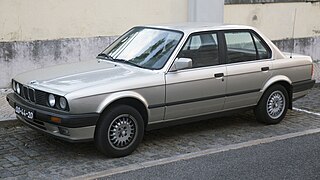
The BMW E30 is the second generation of BMW 3 Series, which was produced from 1982 to 1994 and replaced the E21 3 Series. The model range included 2-door coupe and convertible body styles, as well as being the first 3 Series to be produced in 4-door sedan and wagon/estate body styles. It was powered by four-cylinder petrol, six-cylinder petrol and six-cylinder diesel engines, the latter a first for the 3 Series. The E30 325iX model was the first BMW to have all-wheel drive.

Magna Steyr AG & Co KG is an automobile manufacturer based in Graz, Austria, where its primary manufacturing plant is also located. It is a subsidiary of Canadian-based Magna International and was previously part of the Steyr-Daimler-Puch conglomerate.

The BMW M1 is a mid-engined sports car produced by German automotive manufacturer BMW from 1978 until 1981.

The BMW M21 is a straight-six diesel engine developed by the Bavarian engine manufacturer BMW. It has swirl chamber injection and is based on the M20 petrol engine and was produced for BMW by the Upper Austrian Steyr engine plant from 1983 to 1991. It was succeeded by the M51.
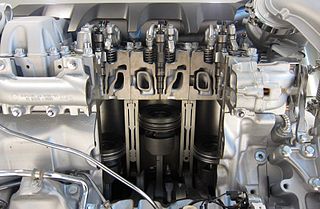
Common rail direct fuel injection is a direct fuel injection system built around a high-pressure fuel rail feeding solenoid valves, as opposed to a low-pressure fuel pump feeding unit injectors. High-pressure injection delivers power and fuel consumption benefits over earlier lower pressure fuel injection, by injecting fuel as a larger number of smaller droplets, giving a much higher ratio of surface area to volume. This provides improved vaporization from the surface of the fuel droplets, and so more efficient combining of atmospheric oxygen with vaporized fuel delivering more complete combustion.

The BMW X3 is a compact luxury crossover SUV manufactured by BMW since 2003, based on the BMW 3 Series platform. Now in its third generation, BMW markets the car as a Sports Activity Vehicle, the company's proprietary descriptor for its X-line luxury vehicles.

The Alfa Romeo 159 is a compact executive car manufactured and marketed by Alfa Romeo between 2004 and 2011. Introduced at the 2005 Geneva Motor Show, as a replacement for the 156, the 159 used the GM/Fiat Premium platform, shared with the Alfa Romeo Brera and Spider as well as the Kamal and Visconti concept cars.
A camless or free-valve piston engine is an engine that has poppet valves operated by means of electromagnetic, hydraulic, or pneumatic actuators instead of conventional cams. Actuators can be used to both open and close valves, or to open valves closed by springs or other means.
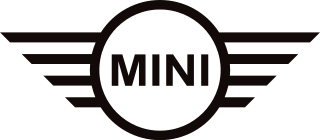
Mini is a British automotive marque founded in 1969, owned by German automotive company BMW since 2000, and used by them for a range of small cars assembled in the United Kingdom, Austria and the Netherlands. The word Mini has been used in car model names since 1959, and in 1969 it became a marque in its own right when the name "Mini" replaced the separate "Austin Mini" and "Morris Mini" car model names. BMW acquired the marque in 1994 when it bought Rover Group, which owned Mini, among other brands.

The aircraft diesel engine or aero diesel is a diesel-powered aircraft engine. They were used in airships and tried in aircraft in the late 1920s and 1930s, but never widely adopted beyond this. Their main advantages are their excellent specific fuel consumption, the reduced flammability and somewhat higher density of their fuel, but these have been outweighed by a combination of inherent disadvantages compared to gasoline-fueled or turboprop engines. The ever-rising cost of avgas and doubts about its future availability have spurred a resurgence in aircraft diesel engine production in the early 2010s.
The L-series engine is an automotive diesel engine built by Powertrain Ltd, a sister company of MG Rover.

Ricardo PLC is a British publicly listed company named after its founder, Sir Harry Ricardo, originally incorporated and registered as Engine Patents Ltd. in 1915. Ricardo is a global engineering, environmental and strategic consultancy, operating across a range of market sectors. Since 1919 the headquarters have been at Shoreham-by-Sea, West Sussex. Ricardo develops engines, transmissions, vehicle systems, intelligent transportation systems (ITS) and hybrid & electric systems in addition to providing environmental and strategic consultancy services.

Diesel engines began to be used in automobiles in the 1930s. Mainly used for commercial applications early on, they did not gain popularity for passenger travel until their development in Europe in the 1950s. After reaching a peak in popularity worldwide around 2015, in the aftermath of Dieselgate, the diesel car rapidly fell out of favor with consumers and regulators.

Engines used by the British company Land Rover in its 4×4 vehicles have included four-cylinder petrol engines, and four- and five-cylinder diesel engines. Straight-six cylinder engines have been used for Land Rover vehicles built under licence. Land Rover has also used various four-cylinder, V8, and V6 engines developed by other companies, but this article deals only with engines developed specifically for Land Rover vehicles.
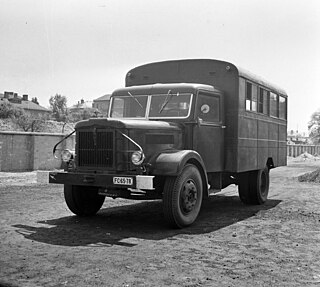
The Csepel D-350 is a lorry made by Hungarian manufacturer Csepel Autógyár from 1950 until 1958. It was the first series production Csepel vehicle, and a copy of the Austrian Steyr 380 lorry, built under licence.
References
- ↑ "BMW puts an emphasis on Diesel engines" (in Hungarian). HVG. Retrieved 2008-02-14.
- ↑ "There is no elevator to success" (in Hungarian). Hungarian Electronic Library. Retrieved 2008-02-14.
- ↑ "Antidepressant anti-Diesel" (in Hungarian). Totalcar. Retrieved 2008-02-14.
- ↑ "Incredible Diesel from BMW" (in Hungarian). Vezess.hu. Retrieved 2008-02-14.